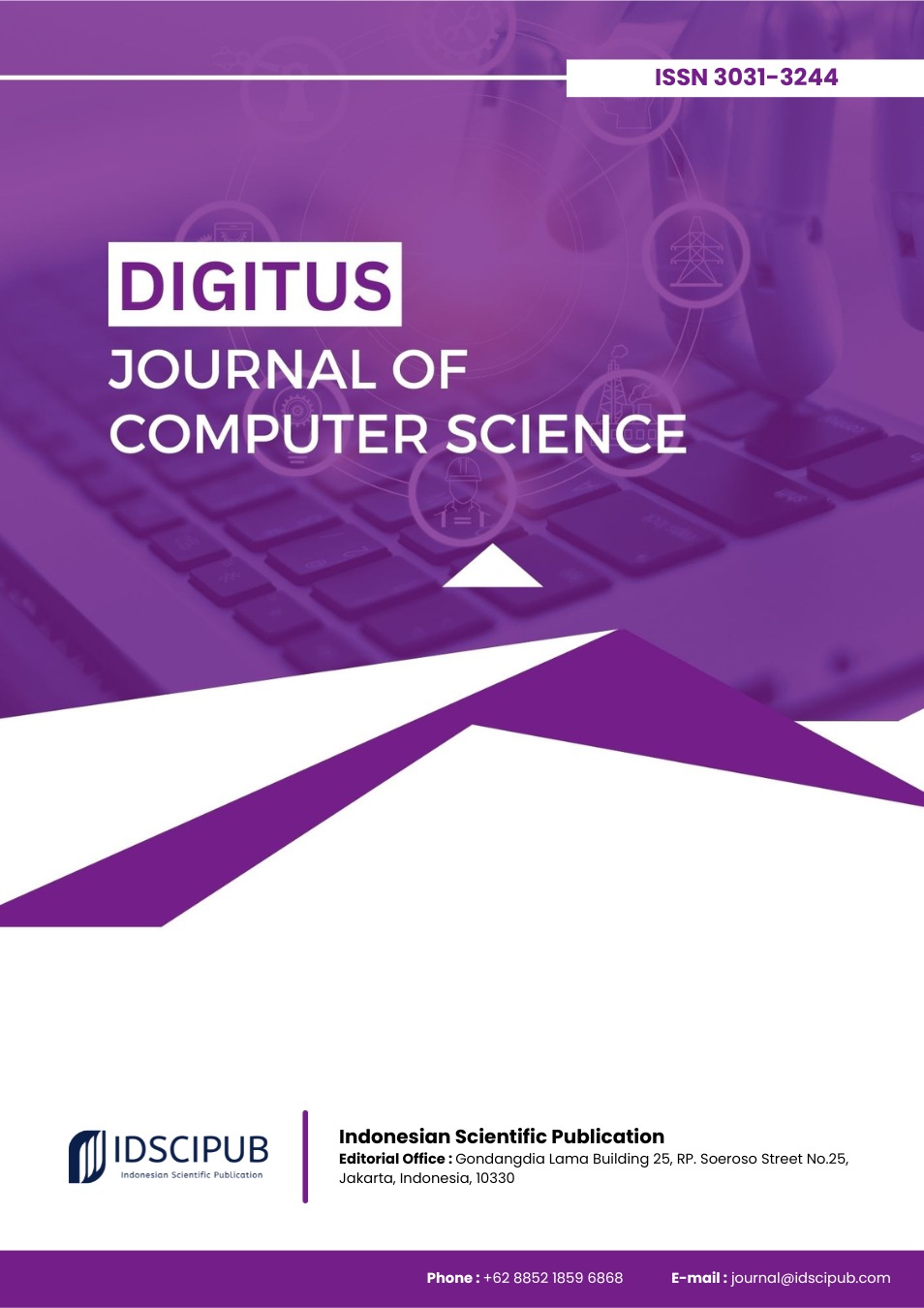Toward Resilient Networks: AI and Deep Learning Strategies for Intrusion Detection
DOI:
https://doi.org/10.61978/digitus.v3i2.881Keywords:
Privacy-Preserving Techniques, Differential Privacy, Federated Learning, Machine Learning, Data Mining, AI Ethics, Data GovernanceAbstract
As cyber threats become more sophisticated and pervasive, the demand for advanced Network Intrusion Detection Systems (NIDS) has increased dramatically. This narrative review investigates the application of Artificial Intelligence (AI) and Deep Learning (DL) techniques in enhancing NIDS performance, aiming to address the limitations of conventional rule-based systems. The literature was systematically retrieved from reputable databases such as Scopus and IEEE Xplore using keywords including "Network Intrusion Detection," "Deep Learning," and "Cybersecurity." Inclusion criteria focused on peer-reviewed studies that utilized AI models for intrusion detection, particularly within complex domains like IoT and smart grids. The review identifies CNN, LSTM, and DNN as the dominant AI models employed in modern NIDS, achieving detection accuracies ranging from 88% to 99% across benchmark datasets such as NSL-KDD and CICIDS2017. These models also demonstrate reduced false-positive rates and enhanced detection of zero-day attacks. Despite their promise, challenges remain, including regulatory constraints, computational limitations in edge devices, and difficulties in model interpretability. Systemic organizational factors—such as leadership commitment, IT infrastructure readiness, and cybersecurity culture—further affect successful implementation. This study highlights the potential of AI-based NIDS as a strategic approach to cybersecurity enhancement and proposes solutions including Explainable AI, hybrid model designs, and federated learning. The findings support further research into cross-domain applications, model transparency, and real-time scalability to unlock the full potential of intelligent intrusion detection systems.
References
Aminifar, A., Shokri, M., Rabbi, F., Pun, V., & Lamo, Y. (2022). Extremely randomized trees with privacy preservation for distributed structured health data. IEEE Access, 10, 6010–6027. https://doi.org/10.1109/access.2022.3141709 DOI: https://doi.org/10.1109/ACCESS.2022.3141709
Chen, H., Wang, H., Long, Q., Jin, D., & Li, Y. (2024). Advancements in federated learning: models, methods, and privacy. ACM Computing Surveys, 57(2), 1–39. https://doi.org/10.1145/3664650 DOI: https://doi.org/10.1145/3664650
Ciampi, M., Sicuranza, M., & Silvestri, S. (2022). A privacy-preserving and standard-based architecture for secondary use of clinical data. Information, 13(2), 87. https://doi.org/10.3390/info13020087 DOI: https://doi.org/10.3390/info13020087
Domingo-Ferrer, J. & Soria-Comas, J. (2022). Multi-dimensional randomized response. IEEE Transactions on Knowledge and Data Engineering, 34(10), 4933–4946. https://doi.org/10.1109/tkde.2020.3045759 DOI: https://doi.org/10.1109/TKDE.2020.3045759
Ghemri, L. (2019). Preserving privacy in data analytics., 3–4. https://doi.org/10.1145/3309182.3311786 DOI: https://doi.org/10.1145/3309182.3311786
Jiang, X., Sarwate, A., & Ohno-Machado, L. (2013). Privacy technology to support data sharing for comparative effectiveness research. Medical Care, 51(Supplement 8 Suppl 3), S58–S65. https://doi.org/10.1097/mlr.0b013e31829b1d10 DOI: https://doi.org/10.1097/MLR.0b013e31829b1d10
Lakshmanna, K., Kavitha, R., Geetha, B., Nanda, A., Radhakrishnan, A., & Kohar, R. (2022). Deep learning-based privacy-preserving data transmission scheme for clustered IIoT environment. Computational Intelligence and Neuroscience, 2022, 1–11. https://doi.org/10.1155/2022/8927830 DOI: https://doi.org/10.1155/2022/8927830
Li, Z., Yang, L., & Li, Z. (2020). Mixture-model-based graph for privacy-preserving semi-supervised learning. IEEE Access, 8, 789–801. https://doi.org/10.1109/access.2019.2961126 DOI: https://doi.org/10.1109/ACCESS.2019.2961126
Liu, W., Zhang, Y., Yang, H., & Meng, Q. (2023). A survey on differential privacy for medical data analysis. Annals of Data Science, 11(2), 733–747. https://doi.org/10.1007/s40745-023-00475-3 DOI: https://doi.org/10.1007/s40745-023-00475-3
Naresh, V. & Thamarai, M. (2023). Privacy‐preserving data mining and machine learning in healthcare: applications, challenges, and solutions. Wiley Interdisciplinary Reviews: Data Mining and Knowledge Discovery, 13(2). https://doi.org/10.1002/widm.1490 DOI: https://doi.org/10.1002/widm.1490
Sei, Y., Andrew, J., & Ohsuga, A. (2022). Machine learning model generation with copula-based synthetic dataset for local differentially private numerical data. IEEE Access, 10, 101656–101671. https://doi.org/10.1109/access.2022.3208715 DOI: https://doi.org/10.1109/ACCESS.2022.3208715
Sunil, N., Narsimha, G., & V, K. (2023). Research advancements in privacy preserving: a relative study using bibliometric analysis in emerging areas in computer science. https://doi.org/10.3233/atde221265 DOI: https://doi.org/10.3233/ATDE221265
Upreti, D., Kim, H., Yang, E., & Seo, C. (2024). Defending against label-flipping attacks in federated learning systems using uniform manifold approximation and projection. IAES International Journal of Artificial Intelligence (IJ-AI), 13(1), 459. https://doi.org/10.11591/ijai.v13.i1.pp459-466 DOI: https://doi.org/10.11591/ijai.v13.i1.pp459-466
Wang, L., Meng, L., Liu, F., Shao, W., Fu, K., Xu, S., … & Zhang, S. (2022). A user-centered medical data sharing scheme for privacy-preserving machine learning. Security and Communication Networks, 2022, 1–16. https://doi.org/10.1155/2022/3670107 DOI: https://doi.org/10.1155/2022/3670107





